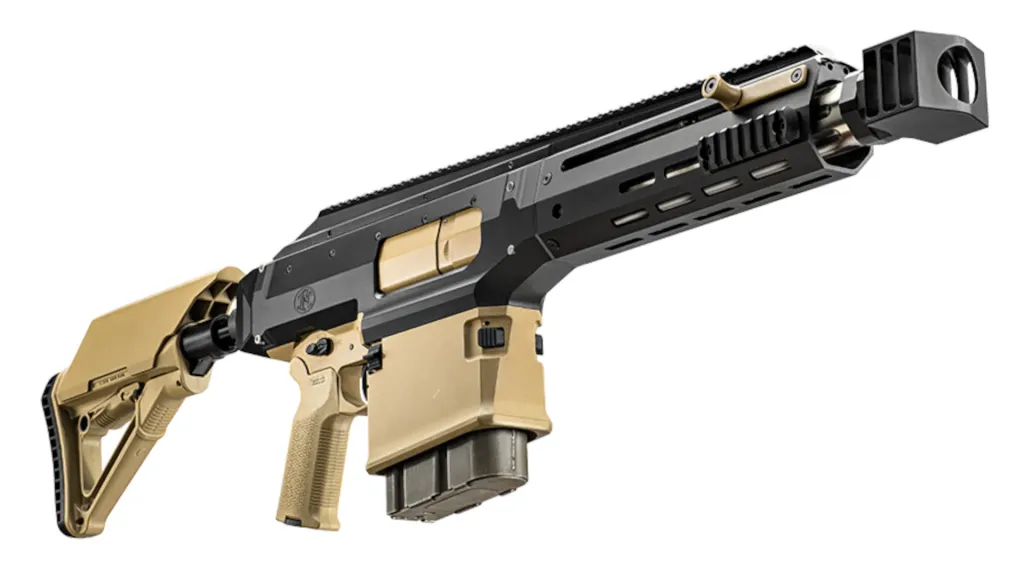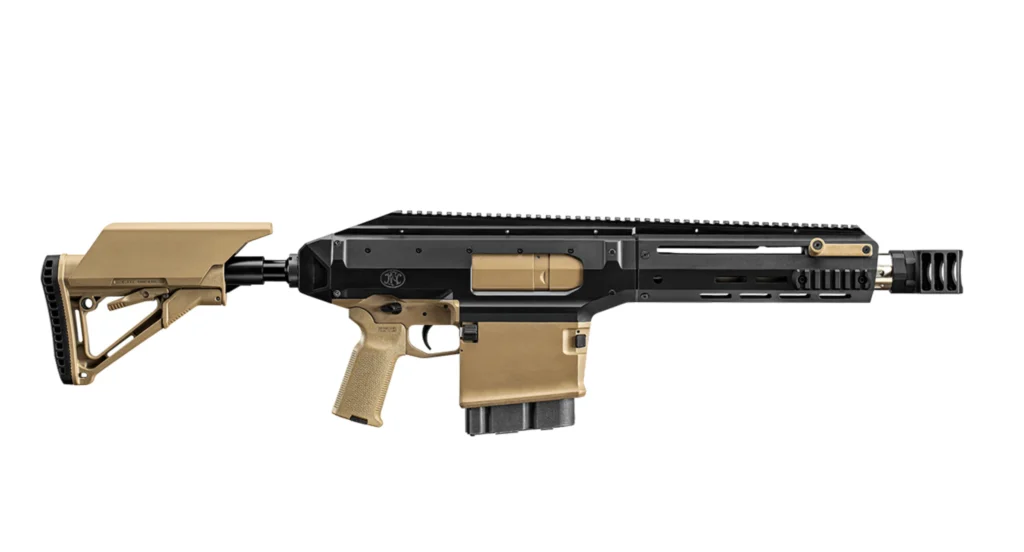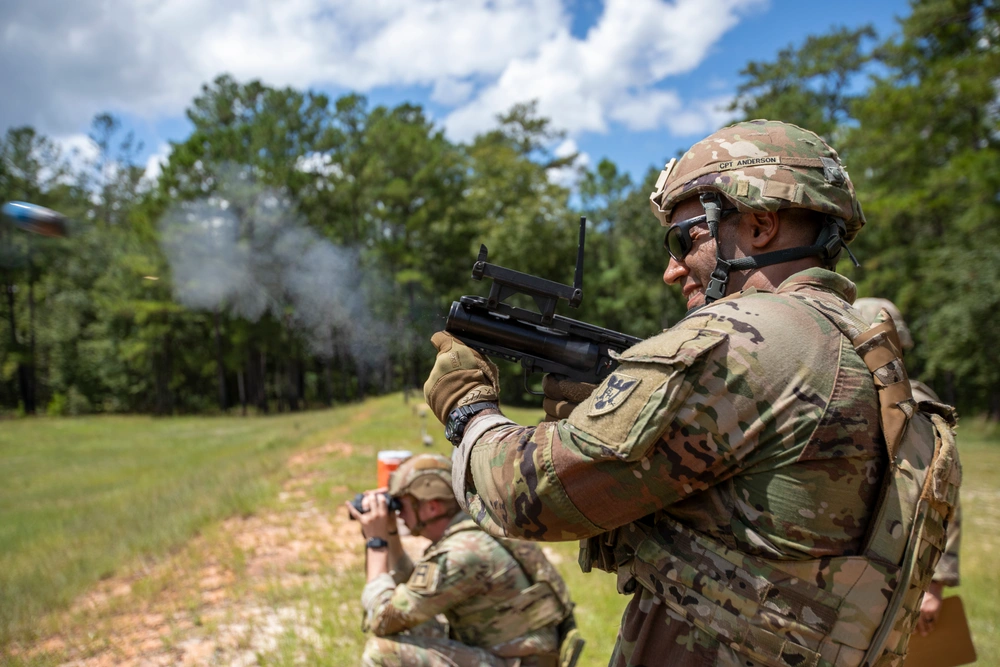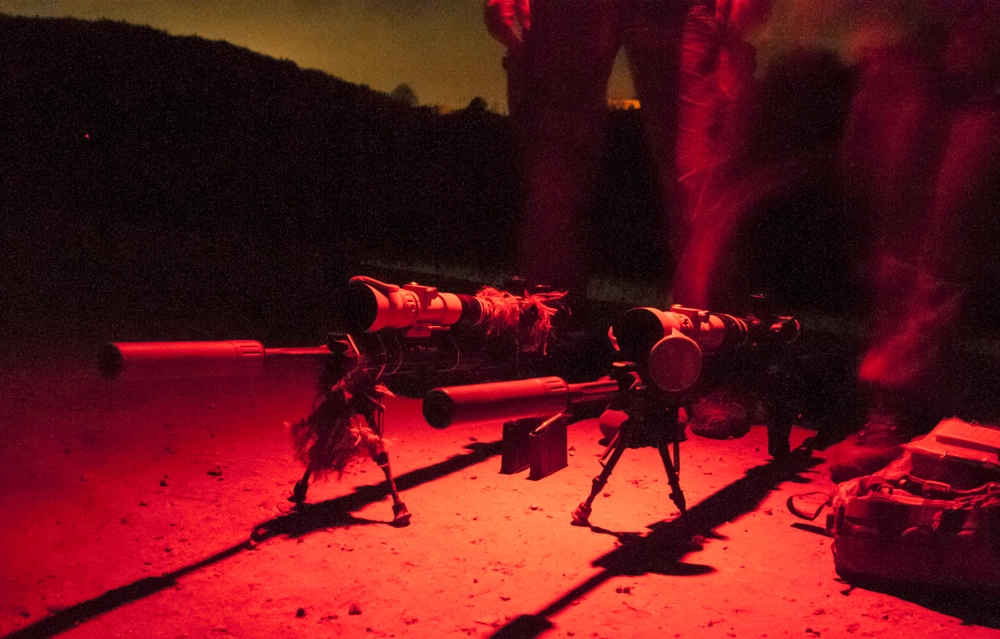FN’s MTL-30 wins the Army’s Precision Grenadier contest for a next-gen grenade launcher
- By Travis Pike
Share This Article

The U.S. Army’s Precision Grenadier contest to select the branch’s next grenade launcher has ended, and FN’s MTL-30 has taken the crown. Other participants in the contest included Barrett – which was a big contender, or at least the most open about its design – and Northrop Grumman in partnership with Colt.
On the contrary, prior to winning the contest, FN was fairly quiet about its entry, but with the win, the company has released the publicly unclassified information to the public.
The photos immediately went viral, even outside of the firearm and defense-industry nerd communities, and comparisons to the “Bolter'” weapon from Warhammer 40K, a science-fiction fantasy series, were made. The MTL-30 admittedly gives off heavy sci-fi vibes.
The purpose of the Precision Grenadier System
Current grenade launchers are low-velocity weapons with limited range that rely on a high angle of fire. Their benefits are that they tend to be small, light, and easily carried on or alongside a rifle. However, they have limited range, lack of effectiveness in flat terrain, and offer limited advantages in urban environments.
The MTL-30 will be able to provide a direct-fire grenade launcher that will be more useful in urban environments and flat terrain.
Traditional 40mm grenade launchers can engage targets hidden behind defilade. In my experience in Afghanistan, the 40mm grenade launchers were excellent for putting grenades over the high walls typical of compounds in the area. The MTL-30 aims to retain this advantage by using airburst grenades that will explode over or beside a wall to rain down shrapnel onto the bad guys hiding behind.
The MTL-30 will use medium-velocity 30mm grenades that look more like rifle rounds than the ogive shape of 40mm grenades.
The weapon provides up to 500 meters of effective range with a relatively flat trajectory that makes aiming quicker and the Soldier more efficient in placing grenades.
The FN MTL-30 system

The FN MTL-30 is a medium-velocity, magazine-fed semi-automatic rifle that purposefully uses controls similar to those of the M4. The controls are ambidextrous with the safety, magazine release, charging handle, and bolt release being mirrored on each side of the weapon.
The magazine holds five rounds and can be quickly reloaded in the middle of a fight. Standard grenade launchers are single-shot designs or six-shot rotary designs and both tend to be somewhat slow to reload.
The MTL-30 looks like a fairly large assault rifle: it’s complete with an optics rail, an M4-style adjustable stock, and a modern rifle-style M-LOK modular handguard. The weapon uses a side-charging handle that’s non-reciprocating and located above the barrel.
FN fitted the weapon with a substantial muzzle brake. The purpose of this device is to reduce felt recoil by using the gas emitted by the firing projectile to create a braking effect on recoil. The barrel is also fluted to reduce weight and make a more balanced weapon.
The Army has not declared the optic of choice for the system. A smart optic, or fire-control unit, will be necessary to utilize features like airburst and to provide accurate range-finding capabilities to the Soldier the weapon.
Related: Why the M32 (and M32A1) grenade launchers aren’t popular
Enhancing Soldiers’ capabilities

The MTL-30 will extend the effective range of the grenadier by 150 meters. This enhanced range seems to be part of the Army’s attempt to increase the squad’s overall effective engagement range.
The 30mm grenades will be able to provide the same lethal effects as 40mm grenades – so it will also allows Soldiers to engage light armored vehicles – but the effective casualty range from the explosive is not known.
When paired with a smart optic, the MTL-30 could potentially locate and target drones and program an airburst round to detonate in their vicinity. FN promised close-combat capability, so it’s likely a buckshot-type round will be developed, and could also be utilized for anti-drone capabilities. This buckshot load, as well as various other load designs, could also facilitate breaching.
Another option for counter-drone and counter-personnel could be proximity-fuse rounds. These rounds detonate when they are within a certain distance of a pre-identified threat. Additionally, FN has stated the MTL-30 can be networked with a remote weapon system to create a multi-layered counter-drone system.
But the weapon’s downsides seem to be its size and weight – even though it promises to reduce weight compared to other repeating grenade launchers, like the M32. Current 40mm grenade launchers are secondary weapons, so the grenadier also has to carry a rifle. Given the Army’s past modus operandi, the grenadier will now likely carry the MTL-30 along with an M4 carbine: that’s substantial bulk and ammo weight.
The idea of a medium-velocity, direct-fire grenade launcher isn’t new. The Army has experimented with the concept several times, but those systems had never succeeded. Hopefully, leaps in technology and weapon development will make the MTL-30 a success and American Soldiers more lethal.
Feature Image: The FN MTL-30 grenade launcher. (FN)
Read more from Sandboxx News
- Can older candidates make it through special operations selection?
- Russia announces successful test of nuclear-powered cruise missile – but don’t believe that just yet
- Ukraine plans to place largest order in history for a jet specifically designed to take on Russia
- Which service did best in the military recruiting boom? The numbers are in
- Viral video shows Korean company’s lifelike inflatable F-35 decoy
Related Posts
Sandboxx News Merch
-

‘AirPower’ Classic Hoodie
$46.00 – $48.00Price range: $46.00 through $48.00 Select options This product has multiple variants. The options may be chosen on the product page -

‘Sandboxx News’ Trucker Cap
$27.00 Select options This product has multiple variants. The options may be chosen on the product page -

‘Kinetic Diplomacy’ Bumper Sticker (Black)
$8.00 Add to cart

Travis Pike
Travis Pike is a former Marine Machine gunner who served with 2nd Bn 2nd Marines for 5 years. He deployed in 2009 to Afghanistan and again in 2011 with the 22nd MEU(SOC) during a record-setting 11 months at sea. He’s trained with the Romanian Army, the Spanish Marines, the Emirate Marines, and the Afghan National Army. He serves as an NRA certified pistol instructor and teaches concealed carry classes.
Related to: Gear & Tech

Energy drinks were the unsung hero of the Global War on Terror

The benefits of drones for the Marine Corps

The technologies that will unlock the next generation of firearms

5 benefits that martial arts can have for veterans
Sandboxx News
-

‘Sandboxx News’ Trucker Cap
$27.00 Select options This product has multiple variants. The options may be chosen on the product page -

‘AirPower’ Classic Hoodie
$46.00 – $48.00Price range: $46.00 through $48.00 Select options This product has multiple variants. The options may be chosen on the product page -

‘AirPower’ Golf Rope Hat
$31.00 Select options This product has multiple variants. The options may be chosen on the product page -

‘Sandboxx News’ Dad Hat
$27.00 Select options This product has multiple variants. The options may be chosen on the product page
